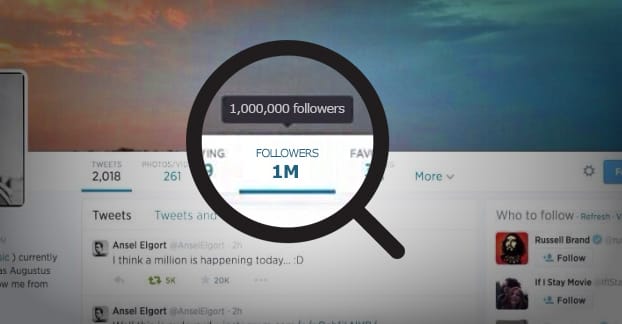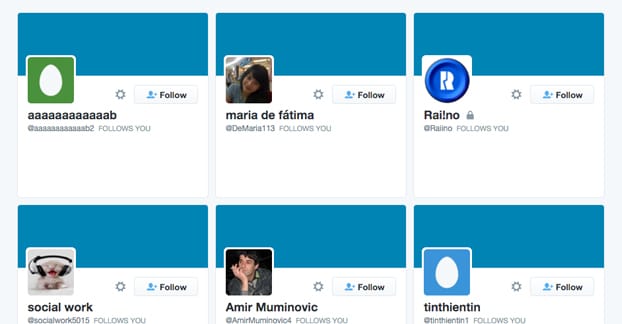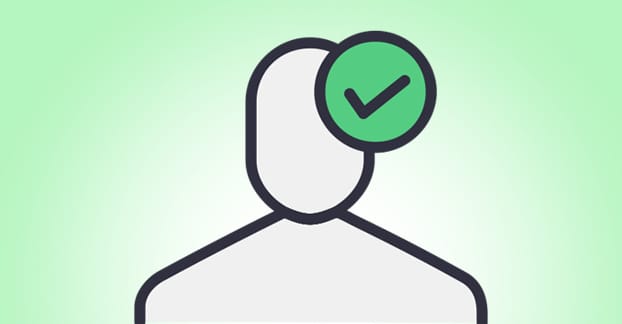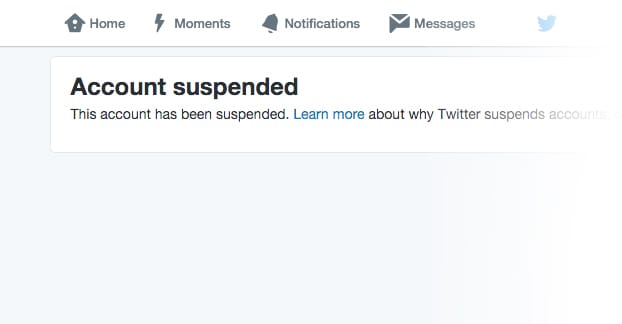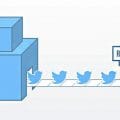On the surface this seems like a pretty easy question to answer. After all, we live in a world where the most popular Twitter account has nearly 70 million followers. If that account isn’t banned, what would be considered “too many” followers?
The answer, of course, is that it’s not quite the right question. There’s no such thing, really, as “too many Twitter followers.” What you’re really asking about is two different risks. The first is too many fake Twitter followers, and the second is too many followers in too short a time.
Both of these are related to black hat techniques you only see when someone is trying to abuse the system to grow their Twitter accounts in a way that violates community, sanity, or terms of service. So let’s look at each of the individually, shall we?
Too Many Fake Followers
Why do I say “too many” fake followers here? Well, the reason is that Twitter is chock full of fake users, bots, and spammers. You’re more likely to be followed by a bot for using a hashtag than you are to get a like from a real user. If Twitter banned everyone who had a fake follower, there would be no one left on the site but eggs and fake accounts.
Fake followers generally exist for a few reasons. Some of them are spambots, made to follow people who post about certain topics and entice them to partake in the services provided by the bot owner. One prominent example is using Twitch.tv to stream. If you post about Twitch or use a #streaming related hashtag, you’ll likely be followed or at least retweeted by one of these bots. Go visit their page and you see a few advertisements for a stream booster service. They are more than likely a scam, of course, and likely to get your Twitch account blocked. That one stray follow, though, isn’t going to get your Twitter account banned.
There are other types of fake followers as well. There are bots that just go around and follow people, with or without them posting anything of any relevant context, hoping that you will follow them back when you get the follow. This allows them to spam your Twitter feed with a message – possibly a message purchased from the owner of the bot – for instant promotion. It’s not good, targeted promotion, but people who don’t know any better will fall into the trap.
There are similar accounts that will rack up followers via this method but never post a message, so as not to drive people away. They then sell the account, claiming it already has X number of followers and a “clean history” of some sort. In reality it’s just a bot account that never did anything other than exploit the follow/unfollow method to rack up users.
Then there are “fake” followers that are actually real people, just not people who speak the same language or live in the same country as the people they follow. This is similar to the clickfarms that plague Facebook. These accounts are harder for Twitter to monitor and remove, because they’re real enough, they’re just used for spam purposes.
Some “fake” followers are even perfectly legitimate. I’ve seen some people set up fake accounts that are used to curate content for an industry without posting original content. People could DM this bot account and that account would retweet the message. These aren’t common, but they’re also not really exploiting anyone or breaking any rules. Then again, they also don’t tend to follow accounts, either.
Fake followers, though, tend to hurt you on any social network. It’s one thing to say that you have a million followers, but if only 1,000 of those followers are real people, what good are they to you? If you’re using Twitter for marketing, you don’t just want followers. You want people who click your links, visit your website, and buy your products. Fake followers don’t do that. They only exist to inflate your follower count or, in the case of spammers, get you to follow back so they can advertise to you.
Fake followers meant to inflate your follower count are the really dangerous type. If you get too many of them, Twitter can decide that you’re breaking their terms of service and can suspend your account. This is why buying fake followers can turn out very poorly for you.
If you’re going to buy followers, buy them legitimately, through PPC advertising or a service that does that advertising for you.
Purging fake followers from your list is unfortunately not an easy process. You can do it in one of two ways; through a third party audit, or through a manual review. Neither method is 100% successful, and both may come up with false positives on occasion. Still, getting rid of 90% of your fake followers is a good thing.
The automatic method involves signing into Twitter through a third party service. Some such services include BotOrNot, StatusPeople, and TwitterAudit.
What these services look for, and what you should look for if you do a manual audit, are clues that indicate a fake follower. For example:
- Check to see if the profile has any information in it at all. A lot of low quality bot sellers just register a ton of egg accounts – that is, accounts that haven’t had any information added to them at all – and use those to follow people. Accounts with no profile information are valueless in almost every instances, so they are fine to purge.
- Check to see if the person has written a very basic profile that shows up in other places when you run a Google search for it. If 100 profiles all have the same profile text, you can bet that they’re probably fake.
- Check to see if the account photos are stereotypical “hot girls” or models. Often times botters will use pictures of beautiful women in order to get the average male user to follow back out of libido more than intellect.
- Check to see if the account photos are used elsewhere. Regardless of whether or not the content is a traditionally pretty female, botters can use stock images to make dozens of profiles look real. Of course, real people use the same image on many sites, so make sure the names don’t match if you suspect fake users.
- Check the follower to following ratio. A real user will generally have more followers than people they are following. Of course, some users just haven’t been able to accumulate many real followers but like to follow people, so this alone isn’t a sign of a fake account. Consider scale, though; 100 followed to 40 followers, sure. 4,000 followed to 100 followers, no deal.
You can also purge accounts that haven’t been active in over a year, if you choose. These aren’t necessarily fake accounts, but they aren’t adding anything to your following, because they aren’t logging on to see your messages. You can use an analytics suite like Twitonomy to see this kind of information.
Too Many Followers Too Fast
So, all of that was about having too many fake followers. What about just gaining too many followers in too short a time frame? There’s not technically a limit to this. You could go viral with a few good tweets and end up with 10,000 new followers in an hour, and that wouldn’t hurt you. Twitter might take a look and see what’s up, but they’d see the viral source of your follows and won’t suspend you.
What Twitter doesn’t like to see is abusive methods of getting followers very quickly. The primary offender, which I linked to above, is the follow/unfollow method. This method is one where you follow a ton of people and hope they follow you back. After a short time – sometimes days, sometimes hours – you unfollow the people you followed, leaving you with them following you but your followed list reasonably small.
Twitter doesn’t so much mind the mass follows, though they have limits on that. They mind the mass unfollows more, so much so that they have in the past asked big name tools like Social Oomph to change their bulk unfollow services.
Twitter has a bunch of limits on follows, unfollows, and ratios that you might want to be aware of.
Twitter Limits
These are limits Twitter has placed on various behaviors, which they have set such that only illegitimate users are likely to reach them. During the normal course of Twitter usage, even high volume marketing usage, you shouldn’t reach these limits.
- Following Ratio. Twitter limits how many people you can follow without having a nearly equivalent number of followers. Currently, this number sits at 5,000. You need roughly 95% of the followed number as followers in order to break the limit. So, you need about 4,500 followers to go above 5,000 people followed. Once you do, the number becomes 10,000, and so forth. Each new limit requires a similar 95% follower count to surpass.
- Unfollows. Twitter doesn’t like bulk unfollows because they assume it’s part of follower churn. For a one-off thing, a purge, it’s not a bad thing to do. However, unfollowing a large number of people every day is liable to earn you a suspension. There is no fixed number here, though, so I can’t point to a specific Twitter rule for you.
- Tweets. You can only post 2,400 tweets per day. However, I can’t imagine a situation where you would get even close to this limit. For reference, that’s 100 tweets every hour of the day, or 1.6 per minute, every minute, for the entire day. That’s a hell of a lot of spam.
- DMs. You can only send 250 direct messages per day, as a hard limit. This does put a bit of a damper on high-volume customer service accounts, but many at that level choose to refer people to special email addresses rather than respond via DM.
- Lists. You can only follow up to 1,000 lists, though this does allow a huge number of people on your feed, because each list can have up to 5,000 people on it.
At the end of the day, just don’t use Twitter like a spammer and you’ll be fine. A natural expansion on Twitter is fine, it’s only when you start breaking rules in the name of artificial growth that you encounter suspension.
What You Can Do If Your Account Is Suspended
First of all, what does Twitter suspend users for? There are a lot of different reasons, and most of them have nothing to do with getting too many followers. So, first, let’s look at the various reasons you can be suspended from Twitter.
The first reason is already covered above; a massive amount of follower churn. The follow/unfollow method can work on a small scale, but when you’re trying to follow and unfollow more than 200 or so people every day, you’re going to run into issues. Twitter will surely notice and issue a suspension.
Another reason is spam. Tweeting the same message over and over again is one possible form of spam, as is sending bulk DMs and trying to circumvent the DM limits. Mentioning random, unaffiliated users with an unrelated bulk message is spam as well, it’s like DMs but without the privacy. Random, wild tweet likes in order to spur profile visits from unrelated users is also spam, so try not to like too many tweets too often.
Excessive automation is another issue, particularly when you’re using auto-follow bots or follow/unfollow bots. Automatic retweets and automatic posting can both be bannable if abused, but most reasonable scheduling apps are fine.
There are, of course, suspensions issues for posting malware, phishing, impersonating people to steal personal information, and other forms of technical abuse. Likewise, posting content that’s against the terms of service, as well as harassing users, are both problems as well.
So, what can you do if you’re suspended for any of the many possible causes?
Step 1: Contact support. Twitter’s support can be pretty good on occasion, at least with getting back to you to tell you why you were suspended. Unfortunately, what they’re not very good at is unsuspending your account.
Step 2: Wait. Most suspensions for follower churn or excessive follows and unfollows are only one-week suspensions. While this can be damaging to a brand and can cost you money, both in lost traffic and in the costs of tools you pay for, it’s no where near as devastating as a complete banning. Chances are that after a week, you can submit another support ticket and have your suspension lifted.
Step 3: Provide information. Some suspensions may ask you to provide a phone number, confirm an email address, or follow specific information-gathering instructions to get your account back. This is generally for issues where an account was suspended due to signs of being hacked. Unnatural activity from an unusual IP address, for example, can get you suspended. Filing an appeal and submitting proof of your identity and control over your account can get the suspension lifted.
Step 4: Check the status of your support ticket. If you filed a support ticket for an appeal but have not heard back, dig into their tickets system and look for your existing ticket. It’s possible that they closed it with a comment but did not send you a message directly. Sometimes they will send you a message you missed asking for more information and are awaiting your reply.
Step 5: Tweet @delbius. As one of the Twitter staff members concerned with safety, she can often help you if all other routes fail. Do note that she’s on leave until mid-January, though many of you will be reading this well after she has returned. Just keep in mind that this is a last-resort effort. Most of the Twitter staff don’t like being bothered with stuff that can be handled through regular support channels, so always try those channels first.
